Glenn Sestig’s latest modernist villa is inspired by iconic embassies
Inspired by the design of iconic embassies, Thirty Lane perfectly represents Glenn Sestig’s tactful approach
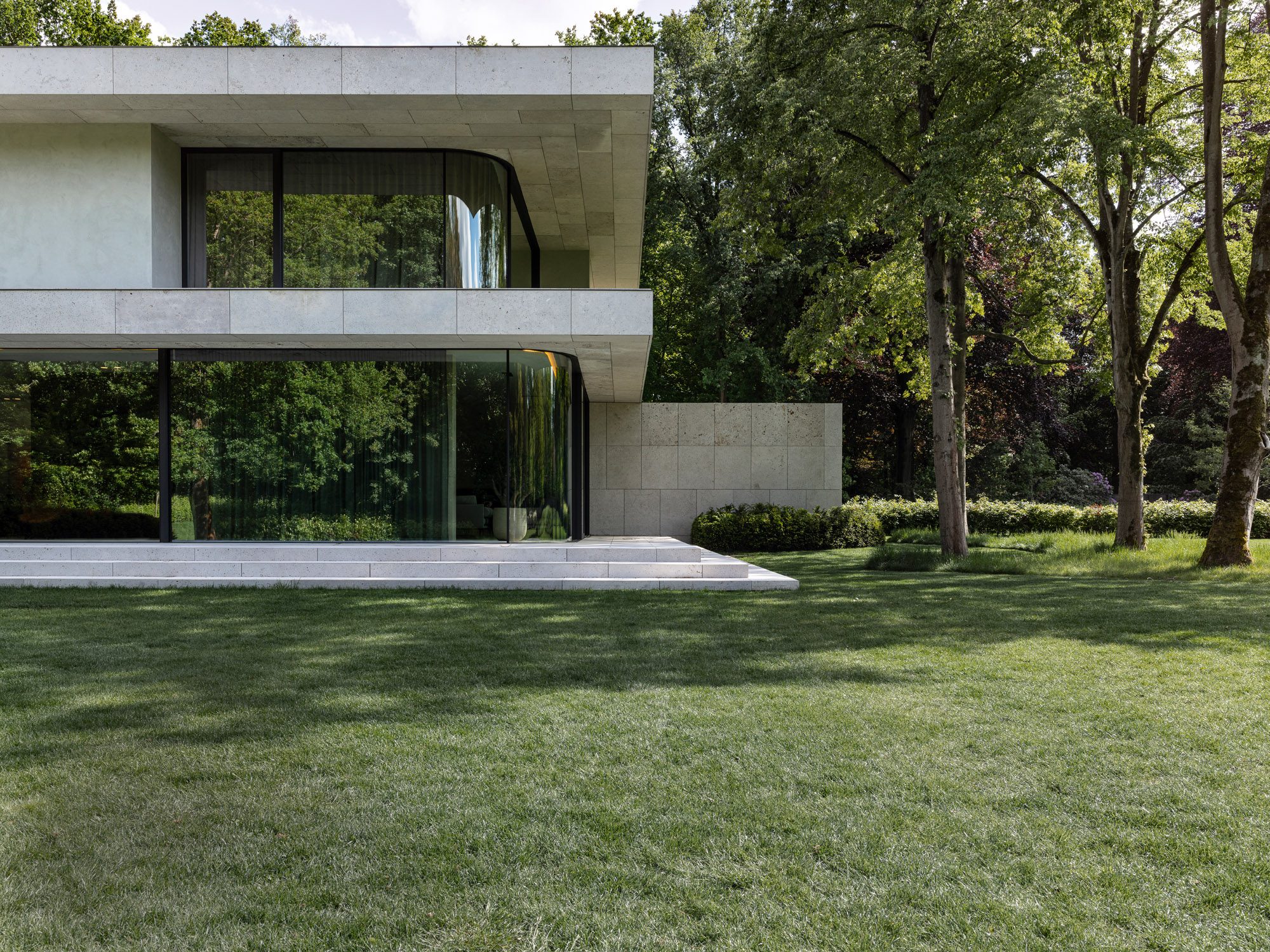
Jean-Pierre Gabriel - Photography
Part modernist villa, part sleek contemporary entertaining space, Thirty Lane nestles into its leafy Belgian countryside setting like a beautifully carved architectural sculpture. Its author, the Ghent-based architect Glenn Sestig, is a master in the art of residential design and a deft hand at blending 20th and 21st century styles, the low key and the glamorous, luxury and subtlety. And this family home near Antwerp is no exception.
Sestig and his client met during a New Year’s Eve dinner at Château Lannoo, the arts venue the architect designed for mutual friend and gallerist Louis Lannoo in Ghent. Thirty Lane’s owners, a family of four, were after an architect to work on their new home in a richly planted plot a stone’s throw from Antwerp. ‘One thing led to another, they came to see my house at the time, Townhouse Sestig, and then asked me if I would like to design their own. After seeing the setting, I was immediately on board,’ the Belgian architect recalls of the modernist villa project’s beginnings.
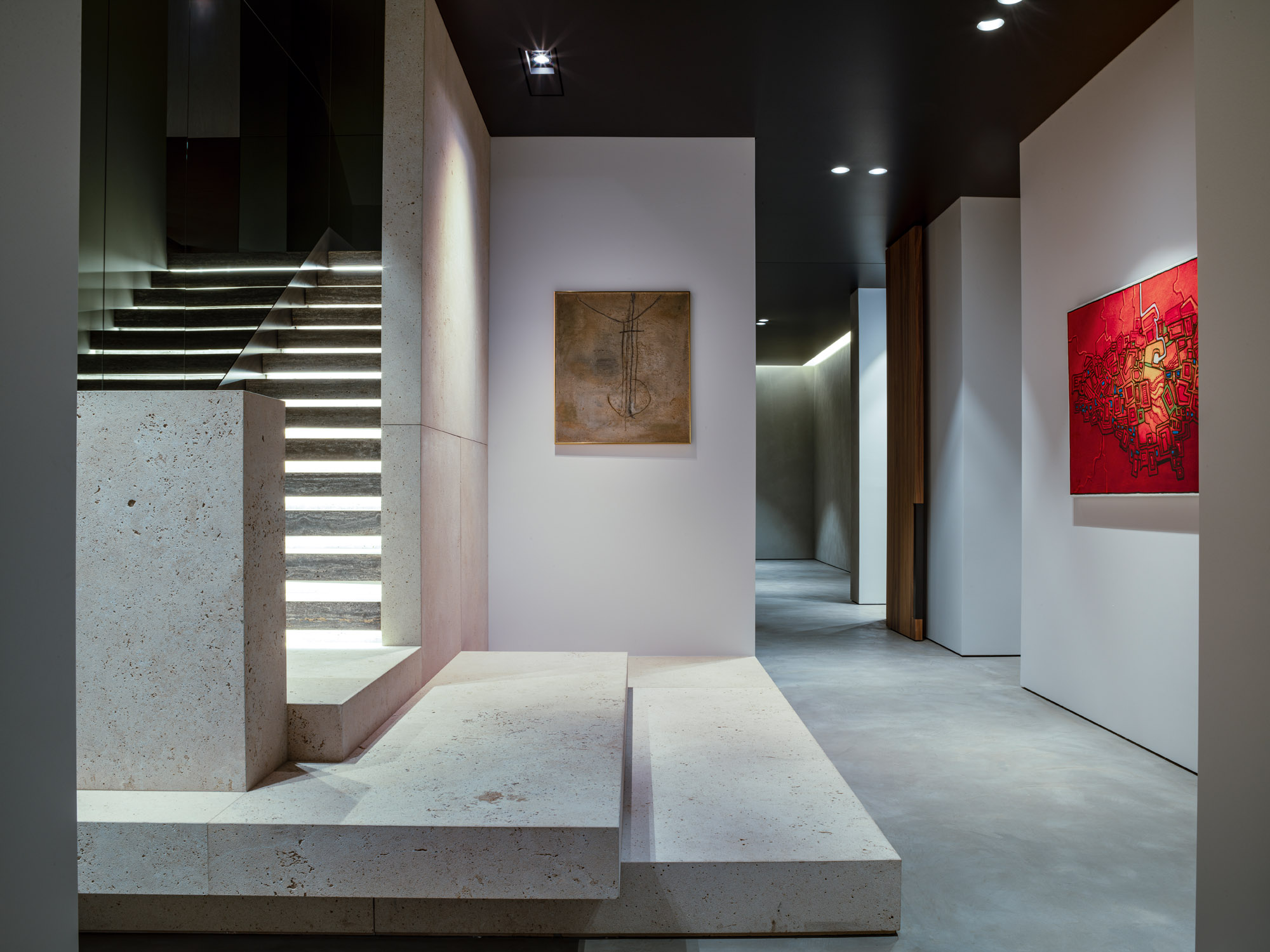
Backlit steps and sculptural elements add drama to the main staircase
Although the idyllic plot was of a generous size, local planning regulations severely restricted the buildable area. It might have felt intuitive to keep a structure low to the ground in such a natural setting, but Sestig decided on a different approach: his solution was to go tall. By adding a second floor above ground and digging one below, the architect was able to make sure the client’s spatial needs were met. Additionally, he was able ‘to visually enlarge the house by using patios and floating canopies that are excluded from the permitted building area’.
Pronounced roof overhangs on both levels delicately extend the house’s outline, and together with the paved outdoor sections, delineate an area larger than the house’s actual footprint. This not only lends a sense of generosity, but also allows the house to embrace its setting. This is a trick Sestig has often used to anchor his architecture to its environment, drawing on gestures found in works by Frank Lloyd Wright and the 20th century modernists – as seen in the long, low overhangs in Sestig’s Villa Wallace and Twenty Three. The interplay between enclosed and open spaces works to further break down the overall volume, balancing the house’s actual size.
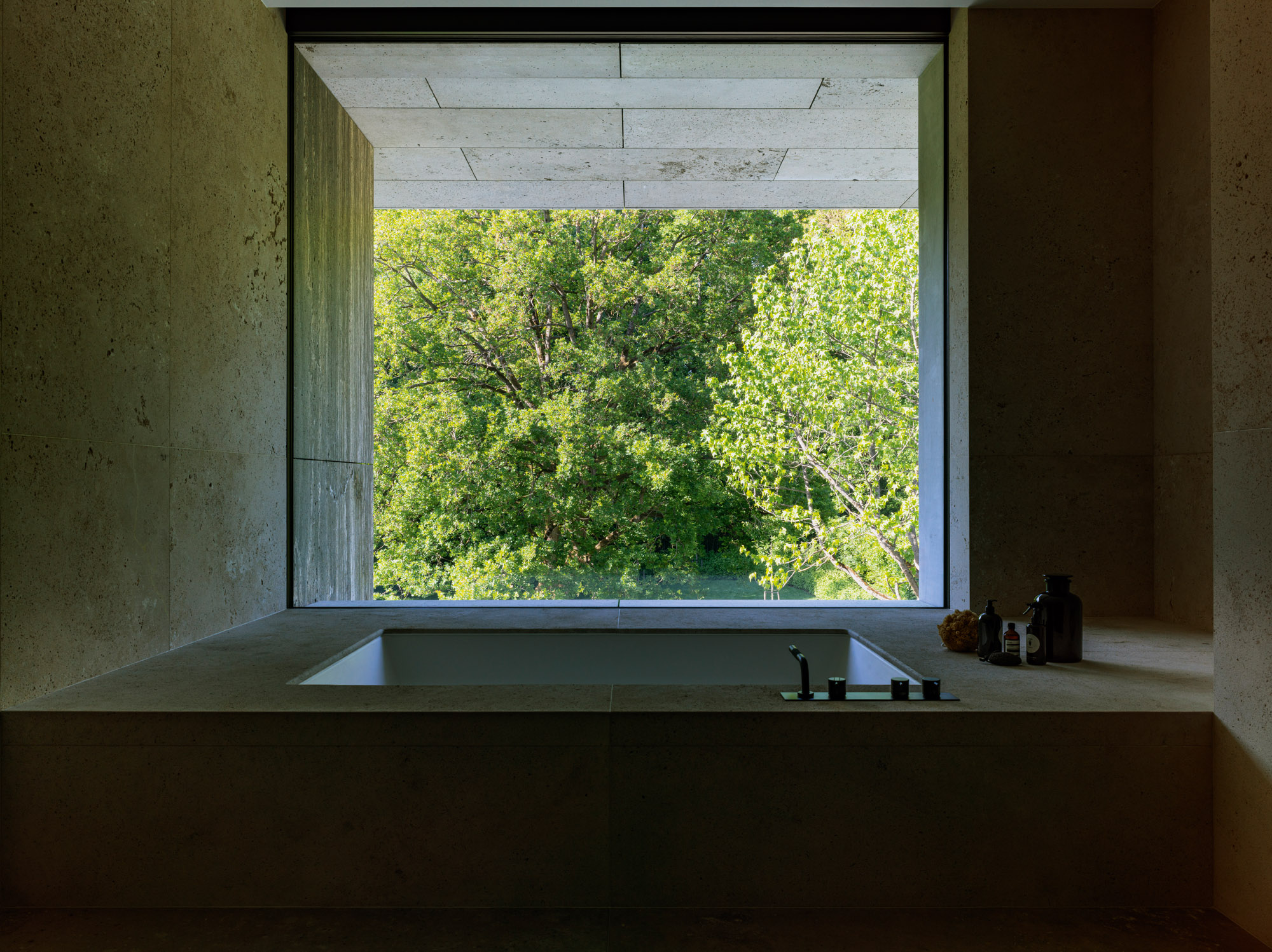
The master bathroom, with a perfectly framed view of the surrounding greenery
Of course, it was not all about managing scale. ‘My inspiration in this case ranged from De Stijl influences and 1930s architecture to the grandeur of embassy design,’ says Sestig. Graphic lines, a play between opaque and transparent surfaces, and dramatic curved glass nod to the first two. ‘The round corner windows also make the square architecture, which was largely dictated by the planning regulations, much softer,’ explains Sestig, who cites projects such as the modernist 1963 Swiss Embassy in Delhi by Hans Hofmann and Walter Rüegg, and the brutalist 1970 Czech and Slovakian Embassy in London by Atelier Beta Prague Project Institute as references. The Belgian art deco Villa Empain also served as a source of inspiration for its ‘monumental volume and rounded corners’.
Inside, the modernist villa is luxuriously designed to its finest detail using natural materials in neutral shades, while reflective surfaces, such as bronze mirror and black glass, add a touch of glamour to the entertaining areas. The ground floor houses a sweeping open-plan living space; the top floor features one master suite, three double bedrooms and a seating area; and the lower ground contains a private bar, cinema room and wellness area.
Above all, Thirty Lane is a finely tuned, balanced piece of domestic design. References to modernism and minimalism sit in perfect harmony against both the softness of the vegetation around it, and the lightness of a space crafted for fun, entertaining and everyday life. It’s the perfect demonstration of Sestig’s mastery in powerful, yet quiet and respectful, architecture.
Wallpaper* Newsletter
Receive our daily digest of inspiration, escapism and design stories from around the world direct to your inbox.
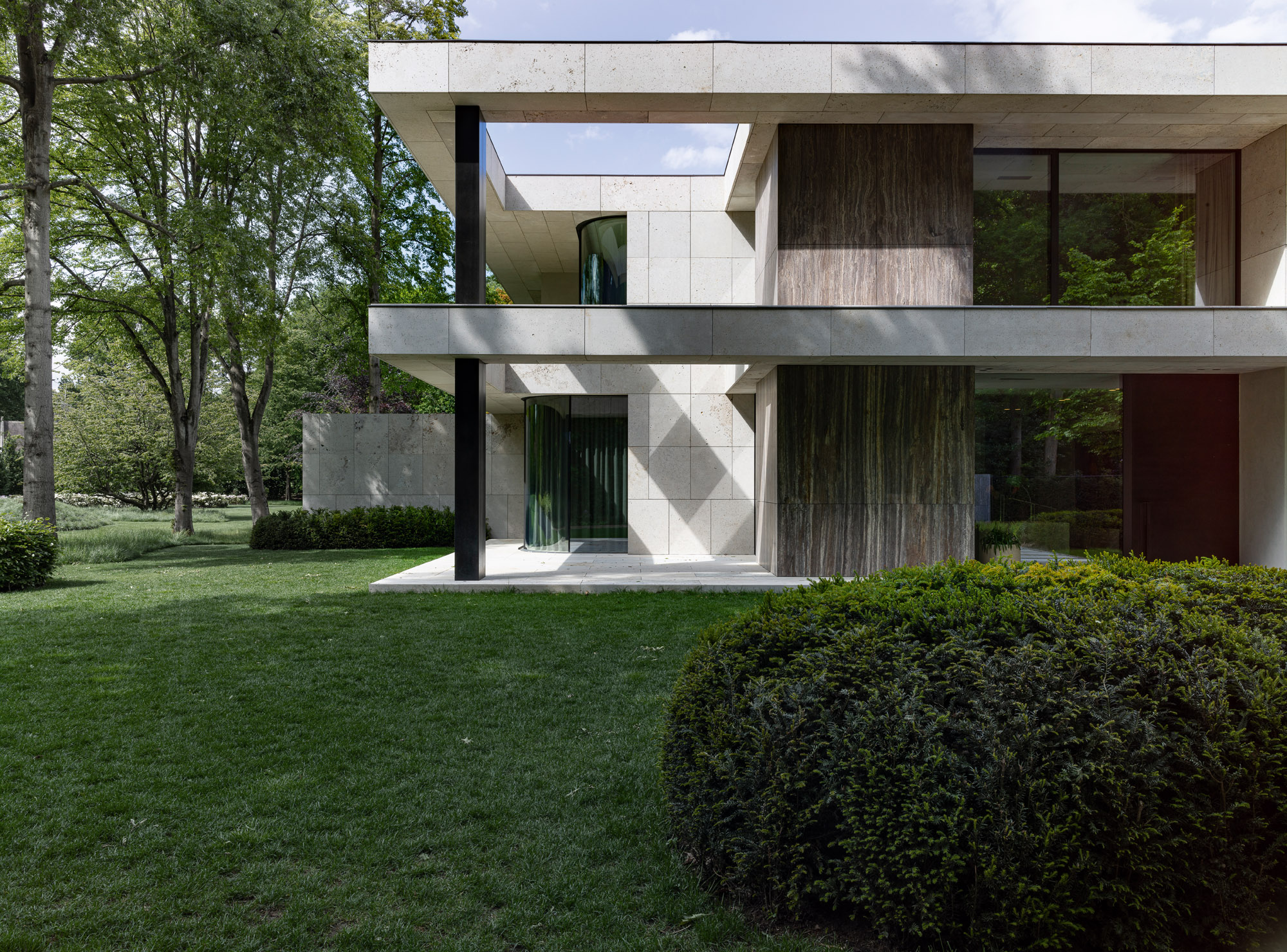
The façade is clad in Titanium travertine and Pietra de Medici limestone
INFORMATION
Ellie Stathaki is the Architecture & Environment Director at Wallpaper*. She trained as an architect at the Aristotle University of Thessaloniki in Greece and studied architectural history at the Bartlett in London. Now an established journalist, she has been a member of the Wallpaper* team since 2006, visiting buildings across the globe and interviewing leading architects such as Tadao Ando and Rem Koolhaas. Ellie has also taken part in judging panels, moderated events, curated shows and contributed in books, such as The Contemporary House (Thames & Hudson, 2018), Glenn Sestig Architecture Diary (2020) and House London (2022).
-
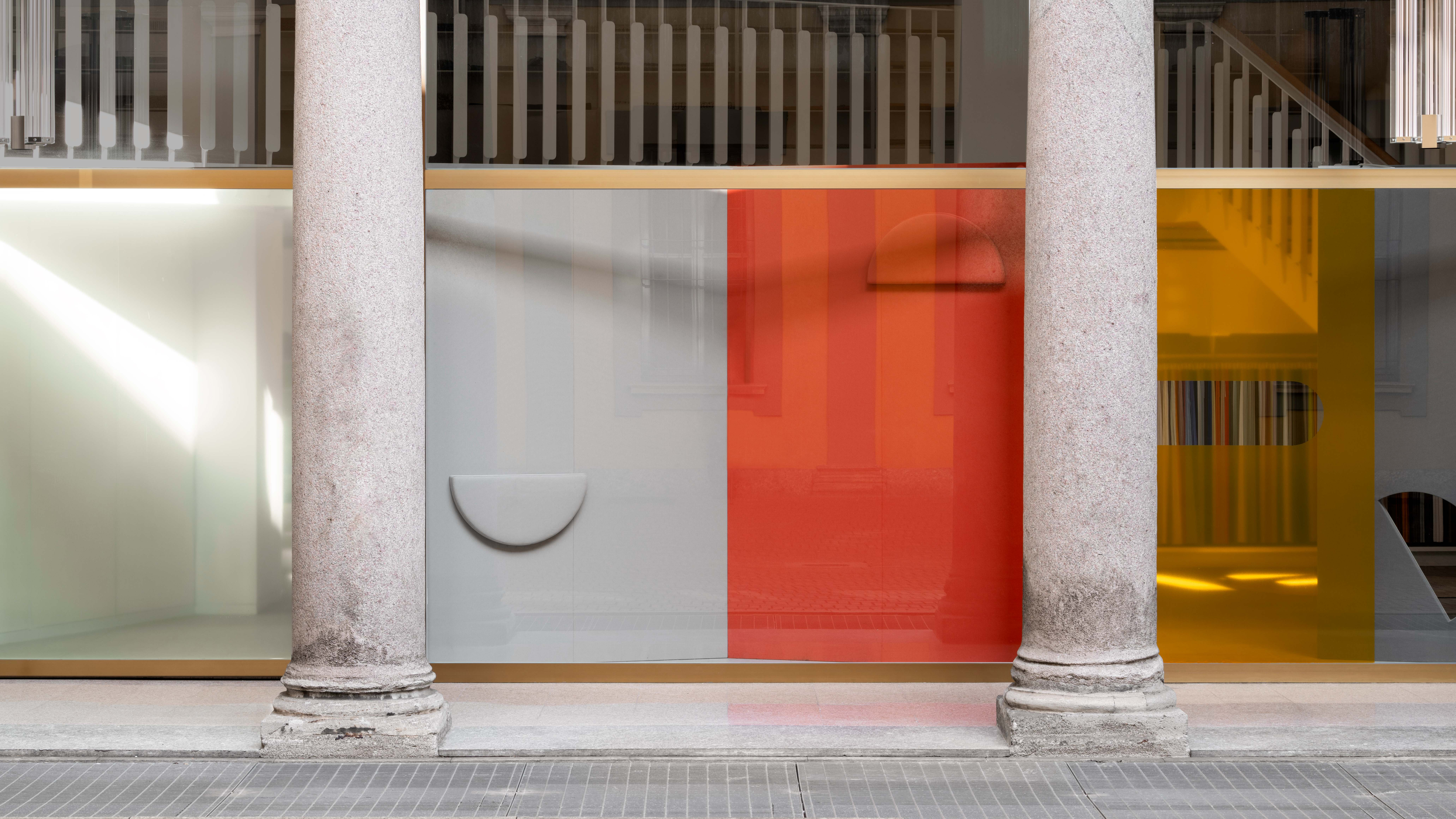 Kapwani Kiwanga transforms Kvadrat’s Milan showroom with a prismatic textile made from ocean waste
Kapwani Kiwanga transforms Kvadrat’s Milan showroom with a prismatic textile made from ocean wasteThe Canada-born artist draws on iridescence in nature to create a dual-toned textile made from ocean-bound plastic
By Ali Morris
-
 This new Vondom outdoor furniture is a breath of fresh air
This new Vondom outdoor furniture is a breath of fresh airDesigned by architect Jean-Marie Massaud, the ‘Pasadena’ collection takes elegance and comfort outdoors
By Simon Mills
-
 Eight designers to know from Rossana Orlandi Gallery’s Milan Design Week 2025 exhibition
Eight designers to know from Rossana Orlandi Gallery’s Milan Design Week 2025 exhibitionWallpaper’s highlights from the mega-exhibition at Rossana Orlandi Gallery include some of the most compelling names in design today
By Anna Solomon
-
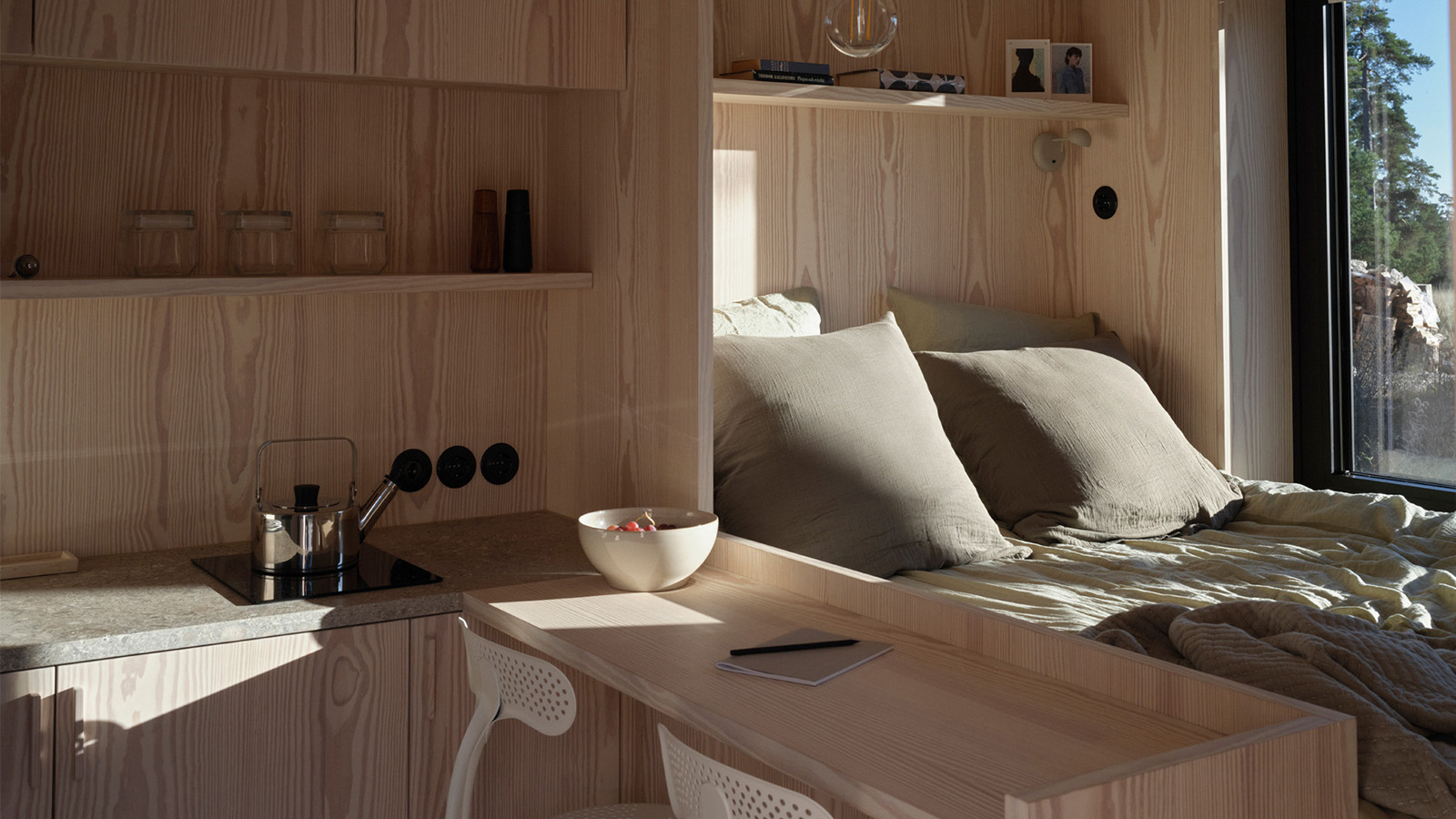 ‘Close to solitude, but with a neighbour’: Furu’s cabins in the woods are a tranquil escape
‘Close to solitude, but with a neighbour’: Furu’s cabins in the woods are a tranquil escapeTaking its name from the Swedish word for ‘pine tree’, creative project management studio Furu is growing against the grain
By Siska Lyssens
-
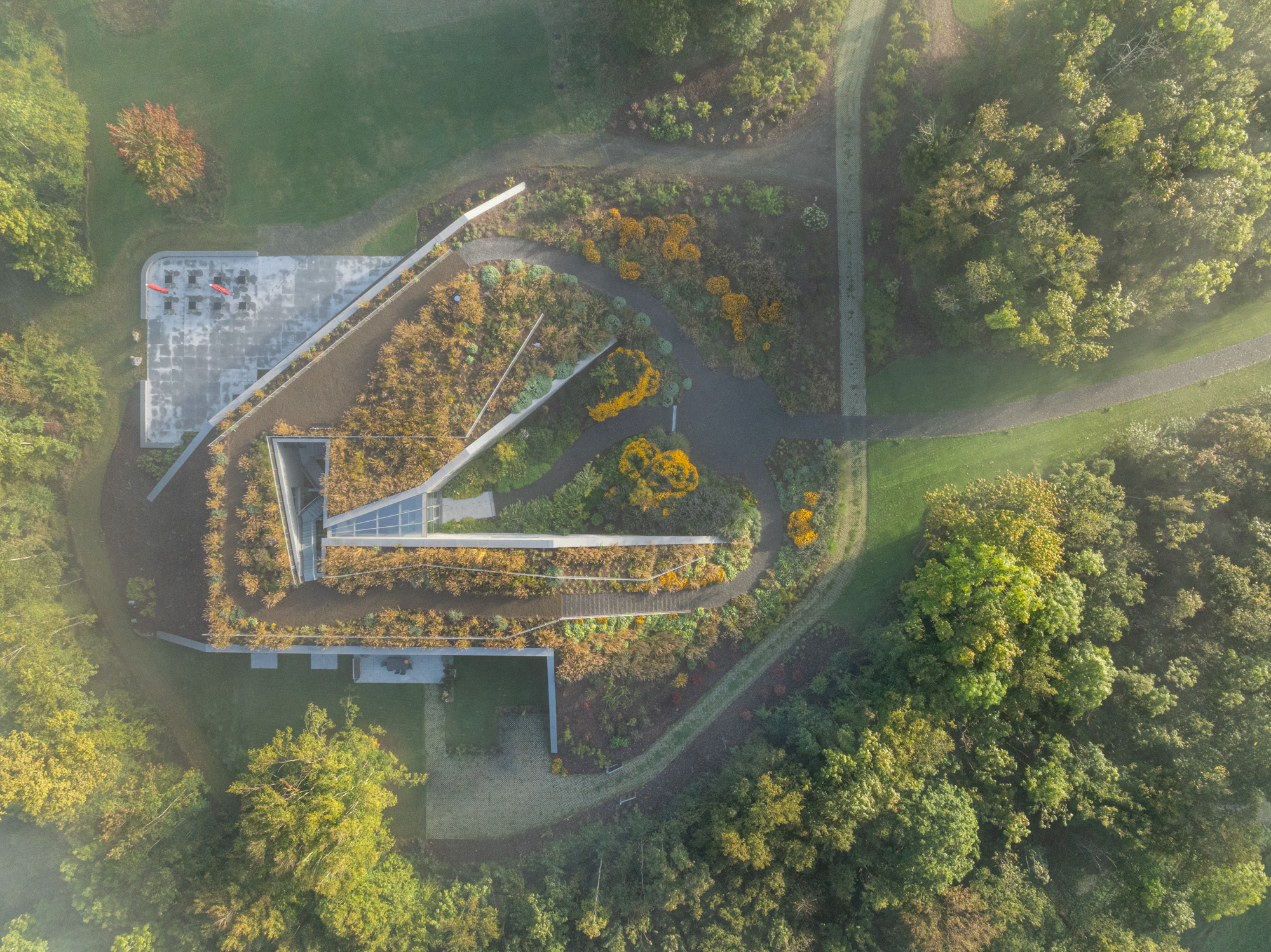 Tour Marche Arboretum, a new 'museum' of plants in Belgium
Tour Marche Arboretum, a new 'museum' of plants in BelgiumMarche Arboretum is a joyful new green space in Belgium, dedicated to nature and science – and a Wallpaper* Design Award 2025 winner
By Ellie Stathaki
-
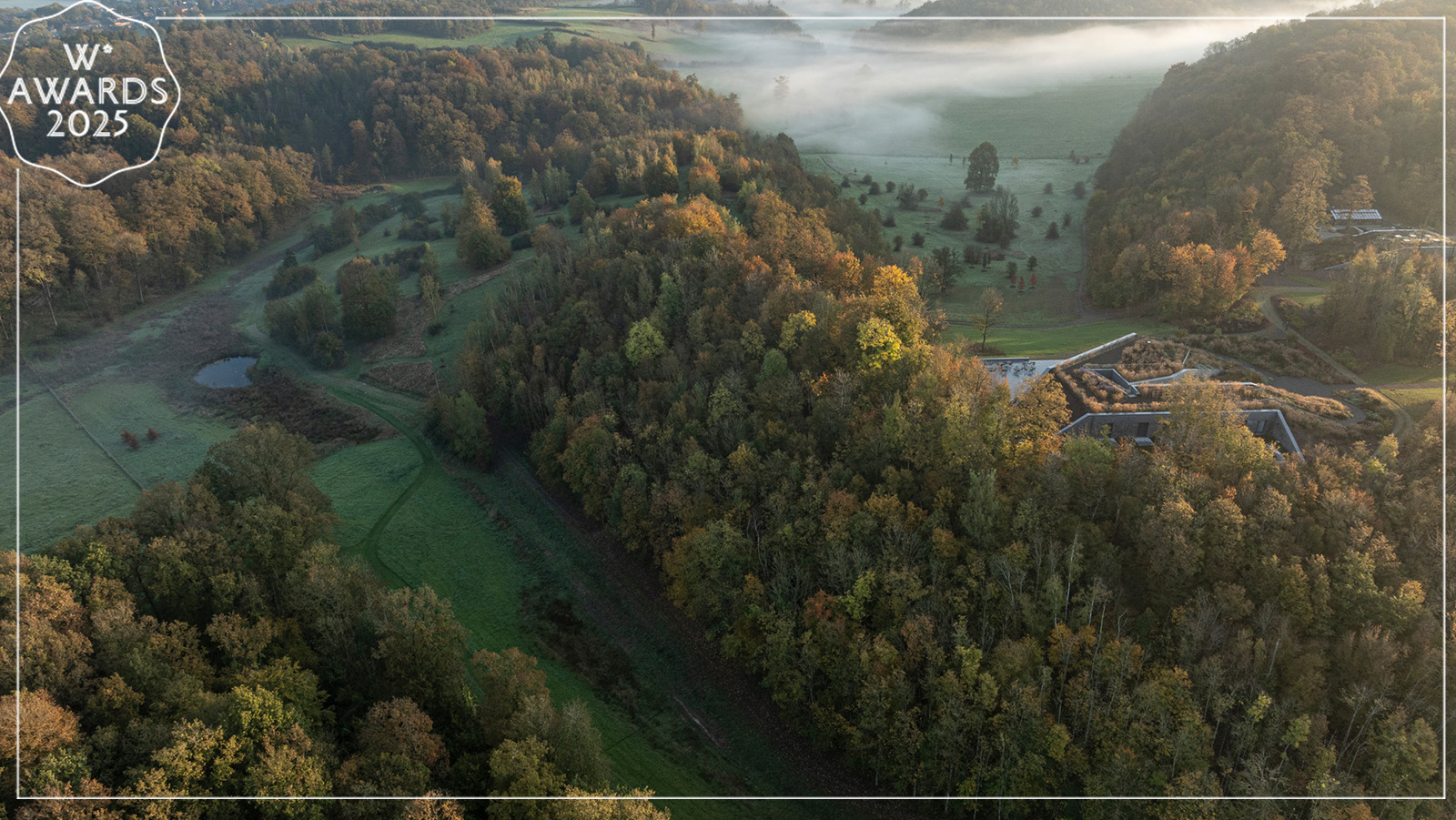 Wallpaper* Design Awards 2025: celebrating architectural projects that restore, rebalance and renew
Wallpaper* Design Awards 2025: celebrating architectural projects that restore, rebalance and renewAs we welcome 2025, the Wallpaper* Architecture Awards look back, and to the future, on how our attitudes change; and celebrate how nature, wellbeing and sustainability take centre stage
By Ellie Stathaki
-
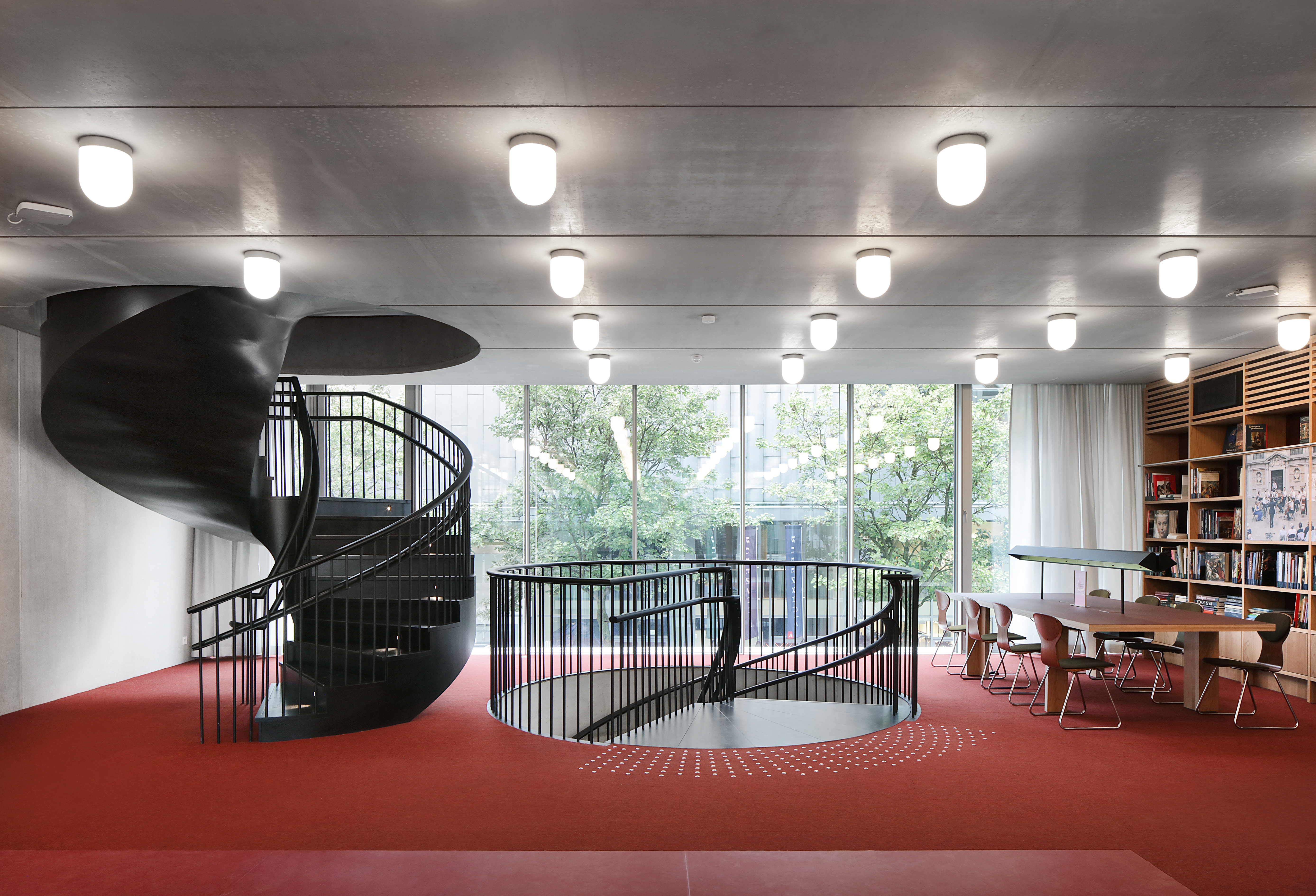 Step through Rubenshuis’ new architectural gateway to the world of the Flemish painter
Step through Rubenshuis’ new architectural gateway to the world of the Flemish painterArchitects Robbrecht en Daem’s new building at Rubenshuis, Antwerp, frames Rubens’ private universe, weaving a modern library and offices into the master’s historic axis of art and nature
By Tim Abrahams
-
 Remembering Alexandros Tombazis (1939-2024), and the Metabolist architecture of this 1970s eco-pioneer
Remembering Alexandros Tombazis (1939-2024), and the Metabolist architecture of this 1970s eco-pioneerBack in September 2010 (W*138), we explored the legacy and history of Greek architect Alexandros Tombazis, who this month celebrates his 80th birthday.
By Ellie Stathaki
-
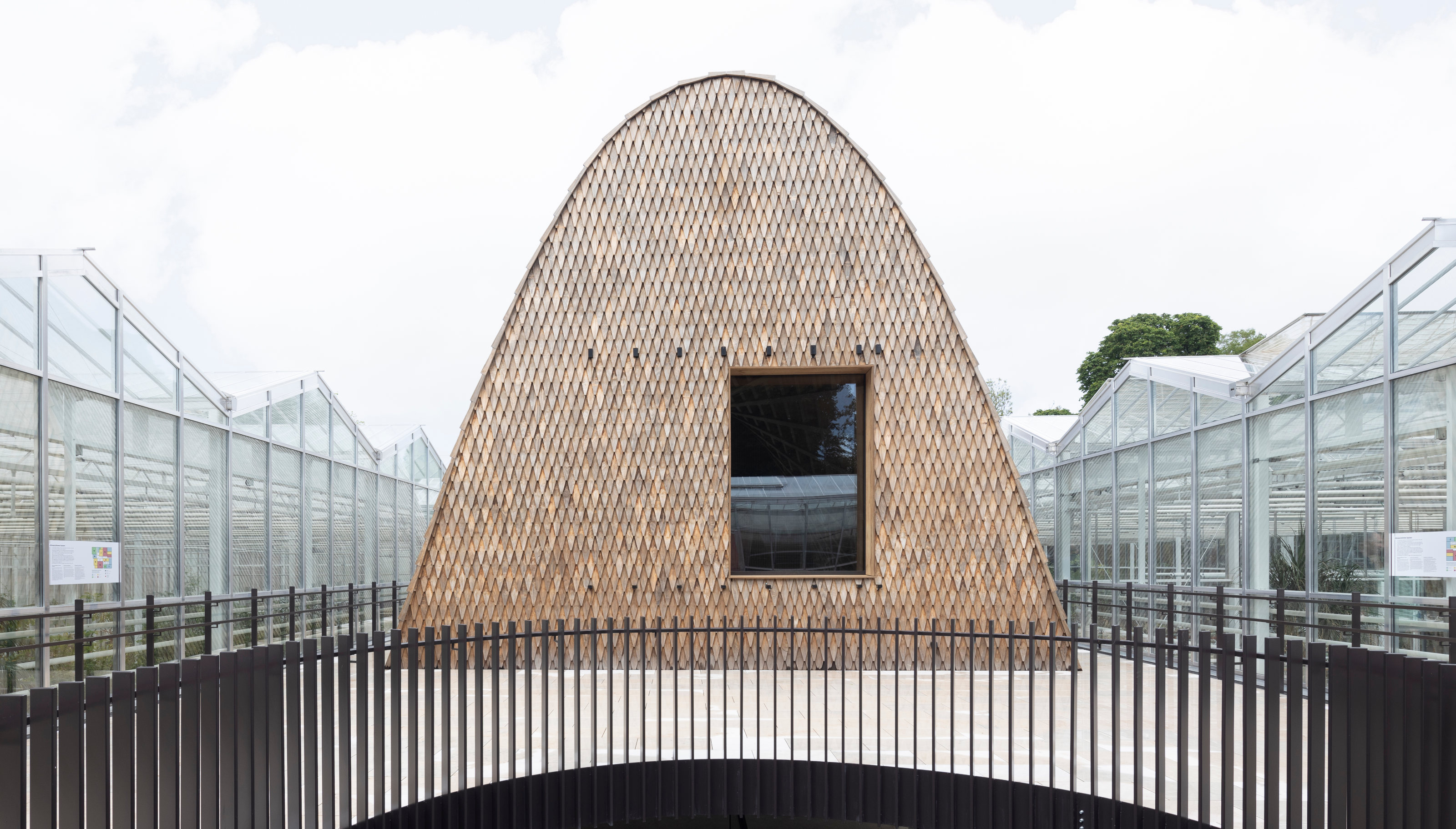 Green Ark, a new garden pavilion from modified softwood, is conceived for plant conservation
Green Ark, a new garden pavilion from modified softwood, is conceived for plant conservationThe Green Ark, set in the heart of Belgium's Meise Botanic Garden, is an ultra-sustainable visitor pavilion by NU Architectuur Atelier
By Jonathan Bell
-
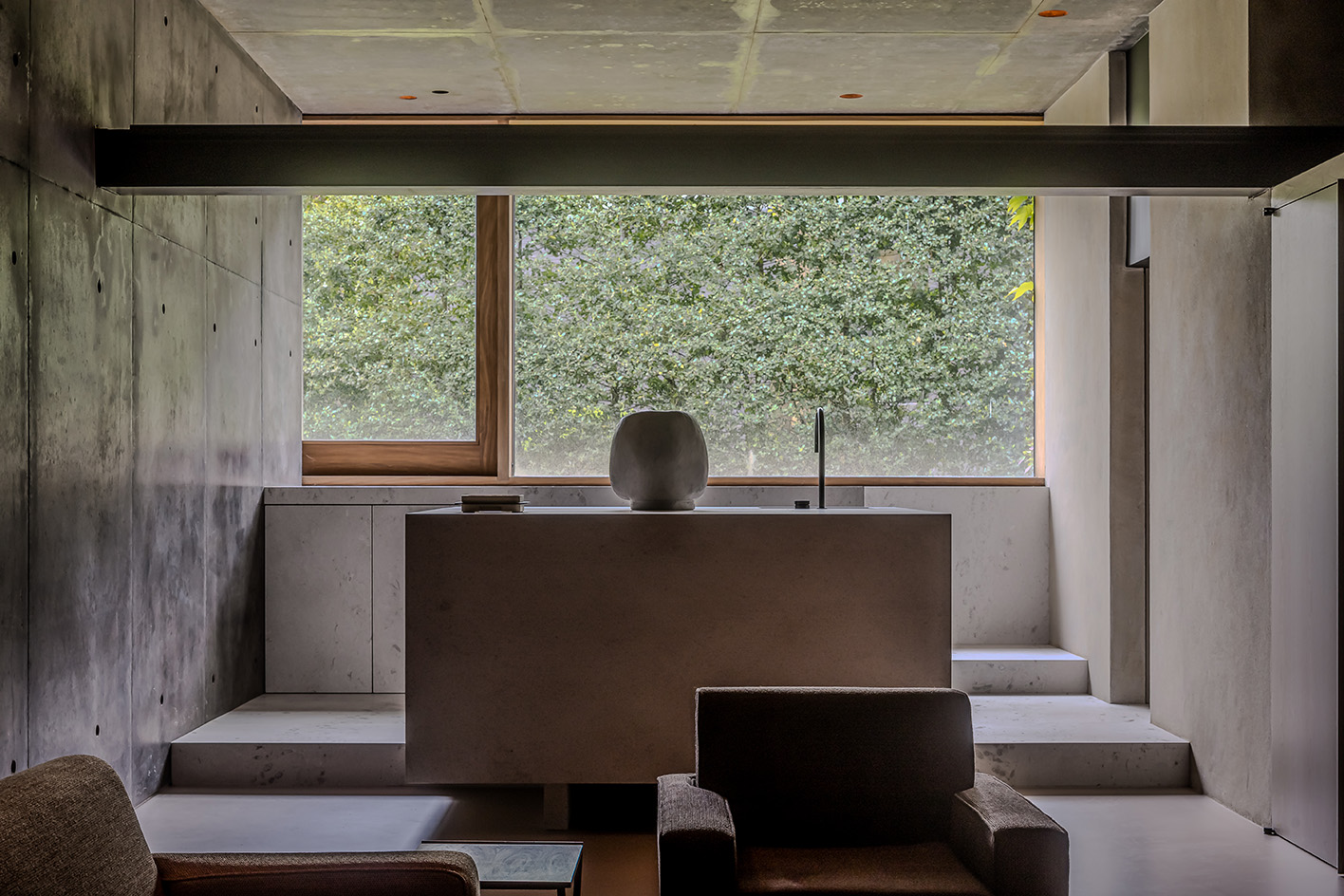 Residence Norah is a modernist Belgian villa transformed to its owner’s needs
Residence Norah is a modernist Belgian villa transformed to its owner’s needsResidence Norah by Glenn Sestig in Belgium’s Deurle transforms an existing gallery space into a flexible private meeting area that perfectly responds to its owner’s requirements
By Ellie Stathaki
-
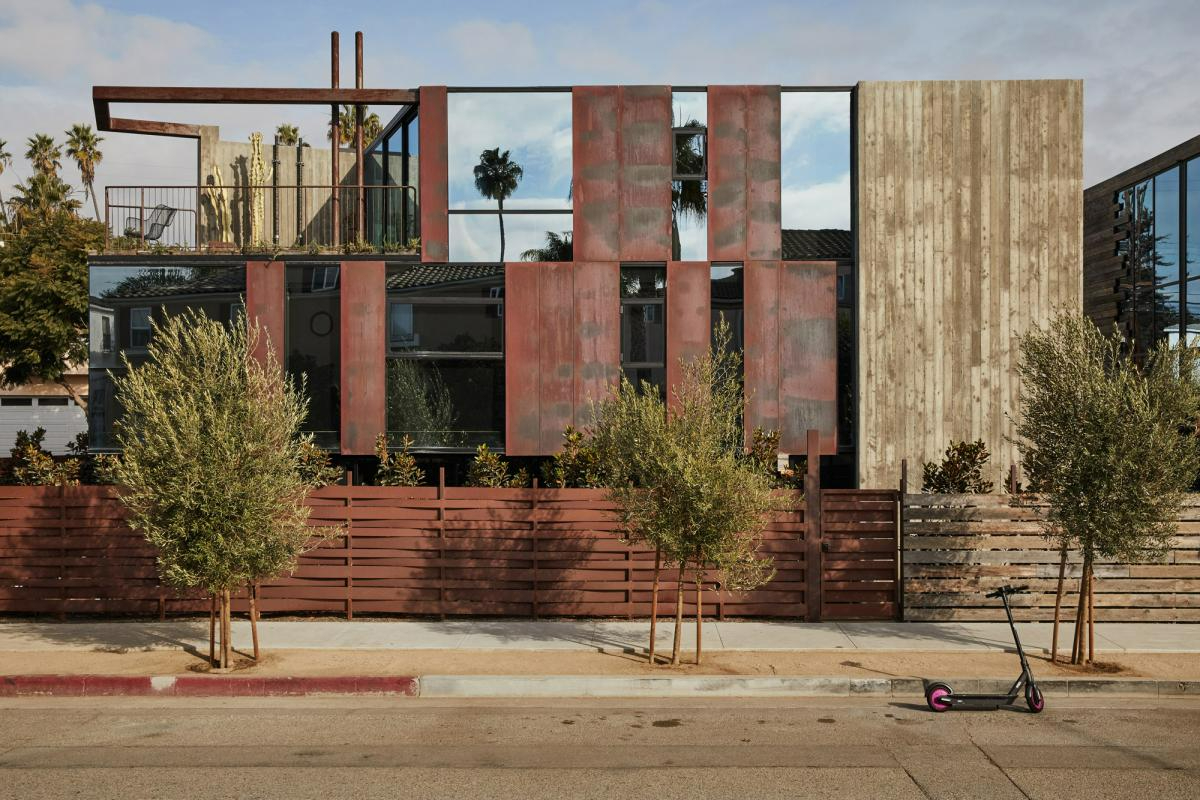 Sun-drenched Los Angeles houses: modernism to minimalism
Sun-drenched Los Angeles houses: modernism to minimalismFrom modernist residences to riveting renovations and new-build contemporary homes, we tour some of the finest Los Angeles houses under the Californian sun
By Ellie Stathaki